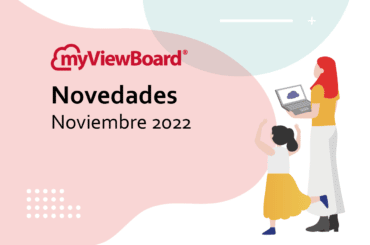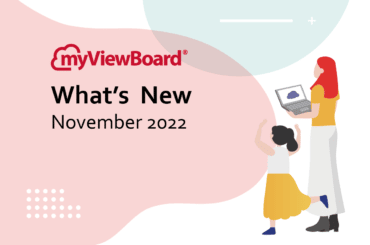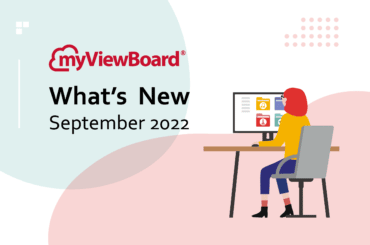This post is also available in: Français (French)
Quick take: Find out how most teachers are finding their educational videos for their lessons and the 5 problems that come from using free resources:
- Advertisements
- Inappropriate content
- Copyrights
- Saving & sharing
- Restricted internet access
Free educational videos are the mainstay of teachers using videos in their lessons but are they worth the trouble? Could using free resources from the internet be detrimental to education?
In our own research we found that 96.6% of teachers surveyed use video in their teaching but access and the quality of good educational videos are a growing concern for teachers.
How teachers find free educational video resources
Teachers use different methods and resources to find the videos they want to use. The majority of teachers who responded to our survey reported they tend to search for videos online using search engines such as YouTube (83%) and Google (61%).
YouTube offers billions of creator-generated videos on the world’s largest free video platform. However, outside of YouTube EDU most other content on YouTube is overwhelmingly publicly generated which carries with it many problems. Content for YouTube EDU is produced by content developers, teachers, and lecturers within schools and universities. Because of this, it is probably one of the more trustable resources for educational videos on the internet because of where the content is coming from.
Similarly, when using Google to search for educational videos the results will yield both YouTube videos under the video tab (Google purchased YouTube in 2006) and websites from across the internet. Common hits are videos from dispersed free and paid-for educational videos websites such as TEDx, Udemy, Khan Academy, and Coursera. These top brands provide overall very good quality and trustable video resources but that is not the case for all videos from other websites that can be found on the internet.

Problems when using free educational videos
Although it is easy to search for content on any topic conceivable on YouTube and Google these videos come with difficulties over content quality and relevance. Teachers need to sort through thousands of search hits to find something that fit their needs. Even if a teacher can find a video resource they can trust other problems can occur. Without watching the whole video and continually testing it, the teacher cannot be sure that advertisements and inappropriate content embedded in many videos will not appear. Other problems to consider are copyrights to use the video without the video owners consent. Then there is also the question of being legally able to save and share videos with other teachers, students, and parents.
For more insights on what teachers want when looking for educational videos check out: What makes a good educational video?
For more insights on free sites that are popular for teachers to use check out: 18 Unexpected Free Educational Videos Website for Teachers
Other alternatives sources of educational videos
In our survey, we found that significantly fewer teachers get videos from other non-web-based sources such as their library (14%) and even fewer from their institution (12%).
Many public and school libraries have databases of videos for patrons to search and use. The drawback to such library video databases would be the limited variety offered and the ability to check out the video for use.
Institutions such as high schools, colleges and universities subscribe to many academic databases that include videos for teachers, researchers, and students. These academic databases are mainly used for research, which may limit their practicality to use them for teaching purposes.
Another big problem with trying to access educational videos at school
Of the teachers we surveyed, 30% of teachers reported that their institution restricts access to some popular websites. These types of restrictions largely limit the accessibility to available content online, forcing teachers to use workarounds or forgo using online tools. The American Library Association president Barbara Stripling said, “over-filtering blocks access to legitimate educational resources, and consequently reduces access to information and learning opportunities for students.”
Although 96% of school have internet access now according to data from the National Center for Education Statistics 87% of schools use some kind of blocking or filtering software. The National Collation Against Censorship stated they are against filters because it may prevent students from accessing important resources which include educational videos.

The solution to free and the numerous
Are free educational videos still worth the trouble? The Deloitte 2016 Digital Education Survey found most teachers believe that multimedia learning will rule in the near future with 67% of teachers reporting they use online educational videos in a typical week. Educational videos are here and they will stay. The question should be how to provide teachers access and guaranteed some level of quality to educational videos.
Our solution at ViewSonic is to create a video-assisted learning platform for educational videos that teachers can use without concern over advertisements, inappropriate content, copyrights, sharing, and non-restrictive. Check out myViewBoard Clips powered by Boclips, to learn more. Our video-assisted learning platform provides educational videos from premier media brands to help teachers safely, seamlessly, and quickly create engaging lessons. myViewBoard Clips powered by Boclips is commercial-free, copyright-cleared, and curated for educational subjects.
More insights into video-assisted learning can be found in our full whitepaper:
Assisted Learning Insights: The Struggle for Teachers to Access Video Content.






1 Comment
Yes! It is worthy by all means of learning. Imagine learning new things and skills just by watching videos is as easy as picking a cherry. As for downloading videos, use the AceThinker Video Keeper since this tool can get any kinds of videos like educational and tutorial videos from popular video sites, and also in HD quality.